Gambling was legalized in Nevada in 1931. The first legal gambling clubs in Las Vegas were simply business as usual, with back room gambling relocated to the front room facing Fremont Street. Locals were the main market, although other clubs, located outside of town along the highways, catered to travelers.
The same year that the Nevada legislature legalized gambling it also liberalized its divorce laws by shortening residency requirements from three months to only six weeks, further spurring the local economy. By 1941, when the El Cortez would open, Nevada was identified with the quickie divorce, old west theme, Boulder Dam, and gambling.
A testament to Las Vegas’ rapid growth was the opening of the El Cortez Hotel and Casino. Built by Los Angeles contractor Marion Hicks with business partner John Grayson, the all-new building was bigger and more impressive than the old Fremont Street clubs. The El Cortez became, with its opening on November 7th, 1941, a key illustration of downtown’s prosperous future at a time when Fremont Street was the heart of the city.
Moe Sedway and associates buy El Cortez. After only three years of ownership, the March 28th 1945 issue of the Las Vegas Review Journal included this: “Transfer of ownership of El Cortez Hotel from Marion Hicks and J.C. Grayson of this city to Edward Berman of Minneapolis and Moe Sedway of Las Vegas was in the process of completion, the potential purchasers said this afternoon. The price was reported to be $800,000. The official deed dated March 29th, 1945 filed at the tax assessor’s office confirming the sale stated “…in consideration of $10 the receipt of which is hereby acknowledged.”
Moe Sedway, who hailed from New York, had been a long time associate of Meyer Lansky and Benjamin “Bugsy” Siegel. Sedway arrived in 1941 and quickly became involved in the growing casino business in the city. Edward Berman was a Minnesota crime figure that had recently relocated to the desert city.
Gus Greenbaum. Eight months later, a December 13, 1945 article was especially telling because, for the first time as documented in the Las Vegas Review-Journal, underworld figure Gus Greenbaum was identified as a member of the El Cortez ownership syndicate:
“Reorganization of the ownership of the El Cortez Hotel was revealed today with the letting of a contract for $250,000 worth of improvements. The hotel will be owned by a new syndicate headed by Moe Sedway and Gus Greenbaum, and Edward Berman, one of the former owners is out of the picture, Sedway declared last night. Other members in the syndicate were not revealed by Sedway.”
Lansky and Siegel. “Other members in the syndicate” would most likely have referred to Meyer Lansky and Benjamin Siegel, who were later identified as co-investors in the El Cortez at that time. Indeed, it is surprising that Gus Greenbaum’s name appeared at all given that he would not be mentioned again in deeds or Las Vegas Review-Journal newspaper articles relating to the El Cortez.
Sale from Sedway to Houssels. Events moved quickly during this time at the El Cortez. A deed dated July 30th 1946 states: “I, Moe Sedway, a single man, in consideration of $629,314.44 the receipt of which is hereby acknowledged, do hereby Grant, Bargain, Sell and Convey to Raymond R. Salmon and J. Kell Houssels all that real property situated in the City of Las Vegas, County of Clark, State of Nevada, bounded and described as follows…”
El Cortez and the Mob. Over the decades various rumors and legends regarding the ownership and management of the El Cortez have surrounded the property. Our research relying on official deeds and newspaper articles of the period confirms that a syndicate of Moe Sedway, Edward Berman, Gus Greenbaum and other associates owned the El Cortez from March 29, 1945 until July 30, 1946, a period of 16 months. It is unknown precisely how much was paid for the property in 1945, although $800,000 was reported by the press (but $10 on the deed), and what the property sold for one-year-and-four-months later ($629,314.44 on the deed). However, it appears highly unlikely that the investment syndicate would have sold the El Cortez for a loss.
The Flamingo. Meanwhile, in November 1945 just seven months after Sedway and his associates had purchased the El Cortez, Los Angeles nightclub impresario Billy Wilkerson had begun construction of the Flamingo Hotel and Casino on Highway 91, which is known today as Las Vegas Boulevard or the Las Vegas “Strip”. It was situated considerably south of the El Rancho and Last Frontier resorts.
Apparently running out of money soon after the project began, Wilkerson accepted a large investment from a group headed by Harry Rothberg of New York that included Moe Sedway, Gus Greenbaum, Meyer Lansky and Benjamin Siegel. These investors helped finance the construction and opening of the Flamingo Hotel.
Siegel’s murder. Unfortunately, the over-budget and mismanaged Flamingo had a very bumpy start, closing for several months after being open for only one night. On June 27, 1947, six months after having presided over the opening – and closing – of the Flamingo, Ben Siegel was murdered. The following day, the management of the Flamingo passed to Moe Sedway, Gus Greenbaum and Dave Berman (Edward Berman’s cousin).
The Fabulous Flamingo. By 1953, when the Flamingo was completely remodeled, it had been a spectacular success under the management of Sedway and Greenbaum. Its sparkling champagne tower became a famous beacon along the Strip for the remainder of the decade.




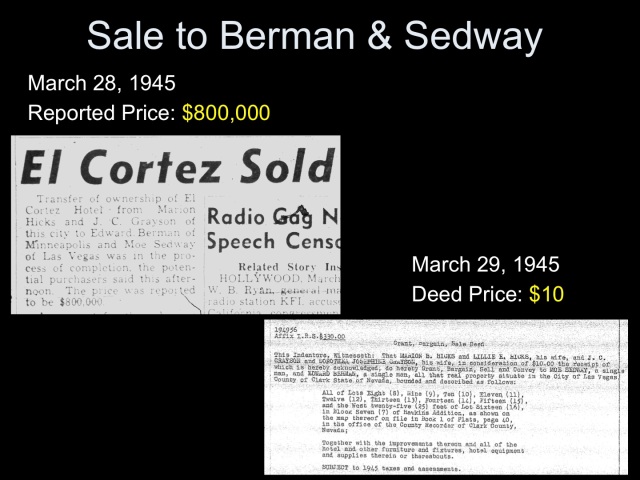
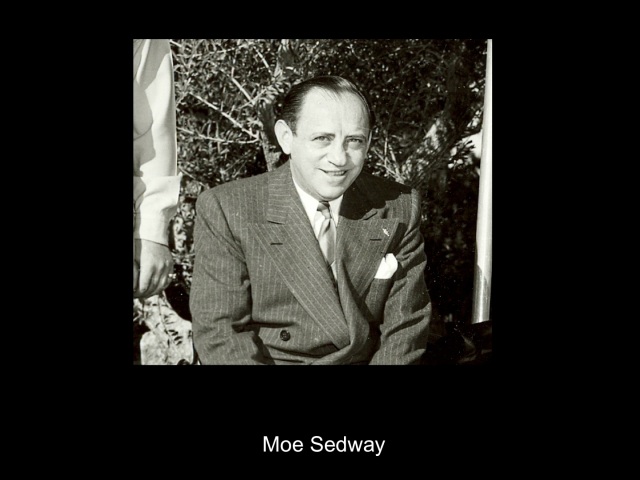
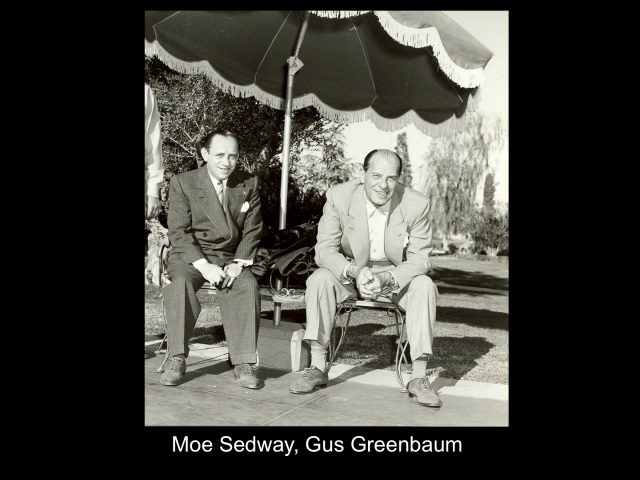

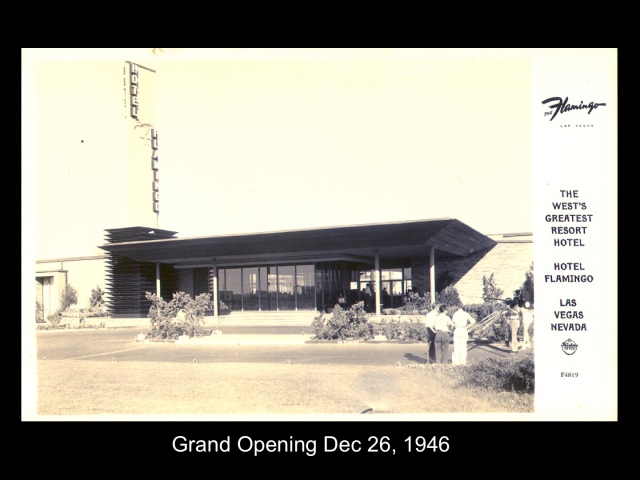
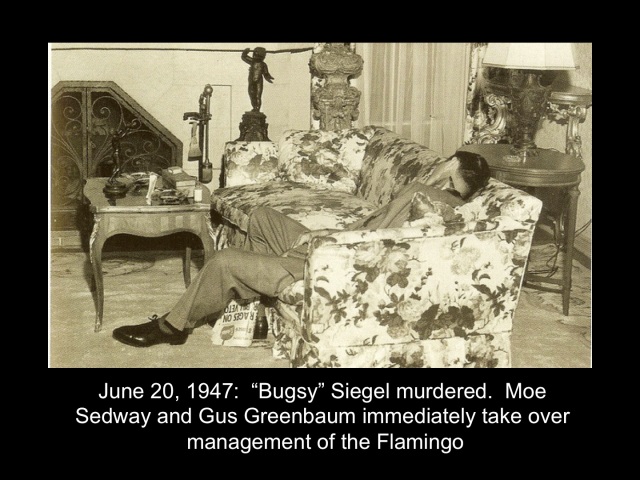


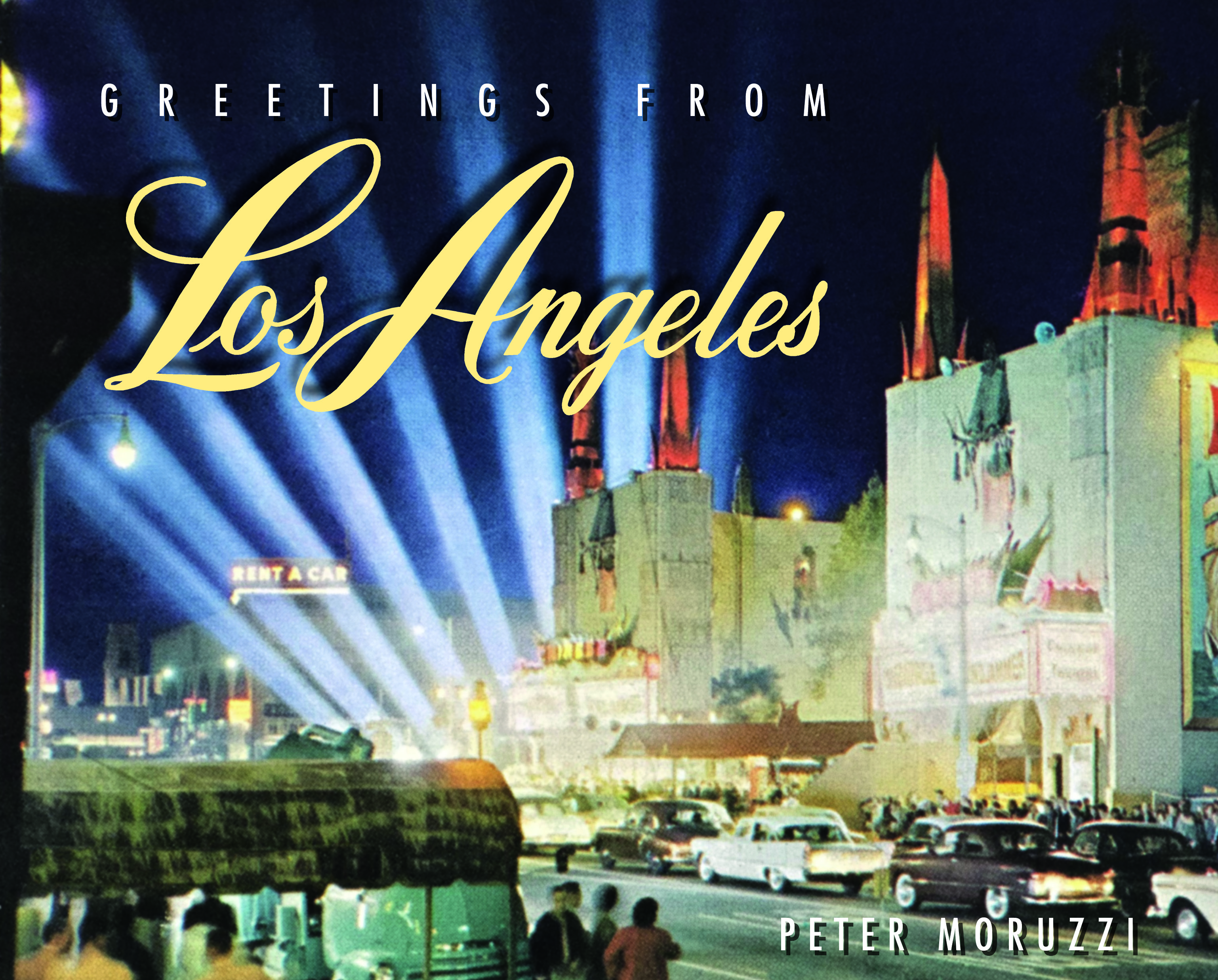


Pingback: Robert Stark interviews Peter Moruzzi about Mid-Century Modern - The Stark Truth With Robert Stark
Peter, very nice pictures of Sedway and Greenbaum. Bernie Sindler claims the mob did not kill Bugsy. He was around the Flamingo when they were building it. What is your take. I would be happy to email Bernie’s theory/story privately to you.
Geno munari
LikeLike
I have no information regarding Siegel’s death other than what has been reported in the press. Alternate theories are of interest, certainly.
LikeLike
Pingback: DispL.A. Case #62: Bugsy Siegel’s Cufflinks |
The true genius was Moe Sedway…. he purchased the adjacent 36 acres to the north of what is now the Flamingo….. a few years before things started happening…. all that was their was a run down motel. What vision this man had!
LikeLike
Are you saying that he purchased the parcel that would be where the Flamingo Hotel would be built? If so, how was Billy Wilkinson able to start the Flamingo project at that site in 1945?
LikeLike
The picture you have labeled as Meyer Lansky is actually Nick The Greek Dandolos, famed professional gambler. And the first photo of the “dingy” casino is the Bank Club in Reno, the largest legal casino in Nevada for several years.
LikeLike
My god, you’re absolutely right about Nick the Greek vs. Meyer Lansky. They must have been separated at birth. I was misled by the photo licensing service…but I should have figured it out myself. Thanks!!
LikeLike